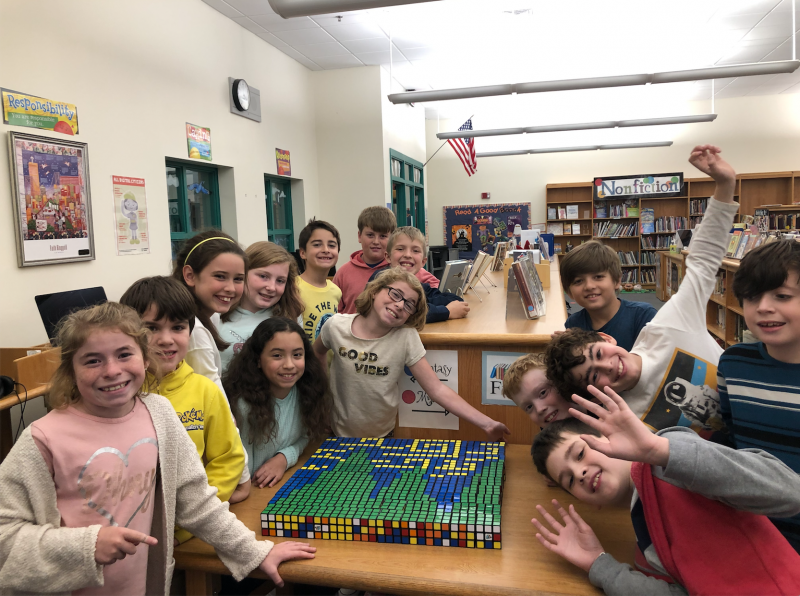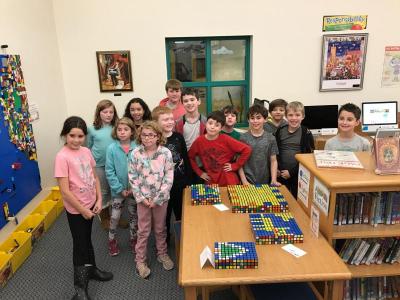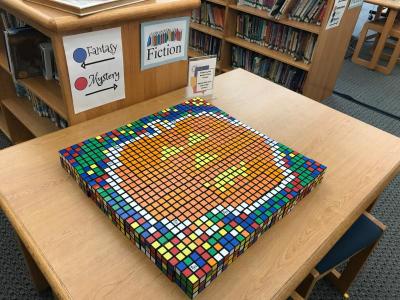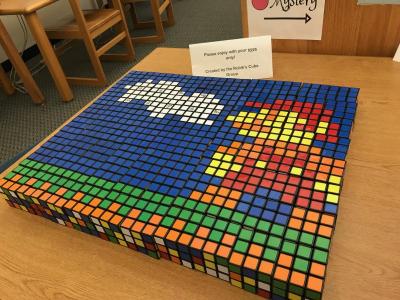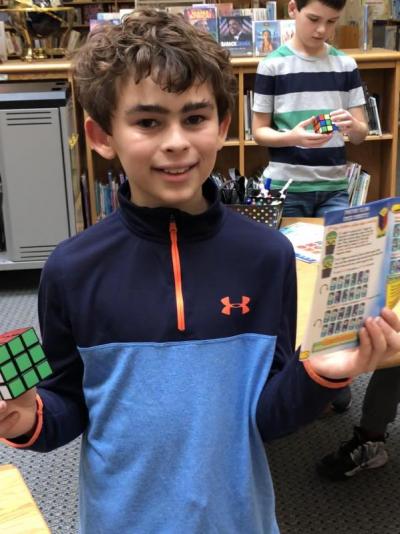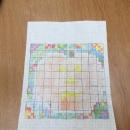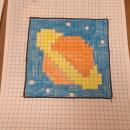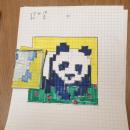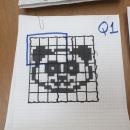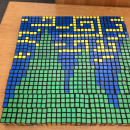Students get creative with Rubik’s Cubes
Rubik’s cubes can be a challenge, a puzzle or a frustration, but to students and teachers in the Sippican School Rubik Cube Mosaic Club they’re a tool to make art.
The club started three years ago when librarian Jessica Barrett noticed other librarians were borrowing sets of 50 to 100 Rubik’s Cubes from the company that makes them.
The cubes were having a bit of a resurgence then, enrichment teacher Chelsey Lawrence explained. One of her students taught her how to solve a cube.
Rubik’s will send schools a set of 50 cubes for free, only asking them to pay to ship them back. But when the club got popular at Sippican School, generous parents decided to purchase a set of 100 Rubik’s cubes and donate them to the school.
Lawrence and Barrett started making murals with designs on Rubik’s website. They divide each mural into four quadrants, and split up the kids in the club into four groups. Each group is then responsible for one quadrant.
Kids can complete about one mural a week. Most of them involve one layer of cubes with designs on one face of the cube. But the group made a giant Rubik’s cube once by solving all of their cubes and stacking them in the shape of a larger cube.
In addition, kids that have trouble learning how to solve Rubik’s cubes or get them into the specific configuration needed for a mosaic, can contribute to the club by designing mosaics on their own.
“It gives kids who aren’t able to solve them a way to contribute,” Barrett said. She herself still hasn’t mastered solving the cubes, even though three students have tried to teach her.
In the first sessions of the club, students make a mural, then spend the rest of their time on their own designs. By the end, they can start making their own designs with cubes. Club members have also entered their designs into competitions.
The Rubik’s cube club does not run continuously throughout the year. Instead it runs in four-week sessions a few times a year on different days of the week. This lets Lawrence and Barrett run other clubs, and opens it up to a wide variety of students to enter.
And for the teachers “it keeps it fresh, when you don’t have it consistently,” Barrett said.
In addition to increasing their creativity through designs, the club also teaches students to collaborate.
“It’s great for teamwork. Student have to work together to solve sections,” Lawrence said.
The teacher and librarian explained that students don’t usually form lasting friendships from the group, but they do seem to enjoy each other’s company.
Mosaics are on display in the library, which helps to get new students involved in the club. And though the Rubik’s cubes themselves have gotten less popular among students, the club has not.



